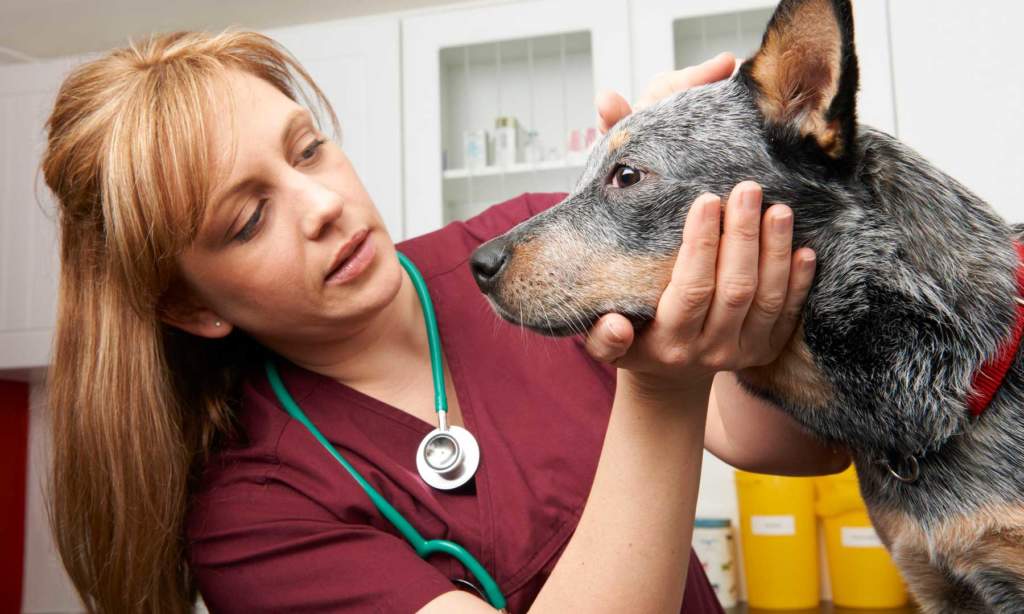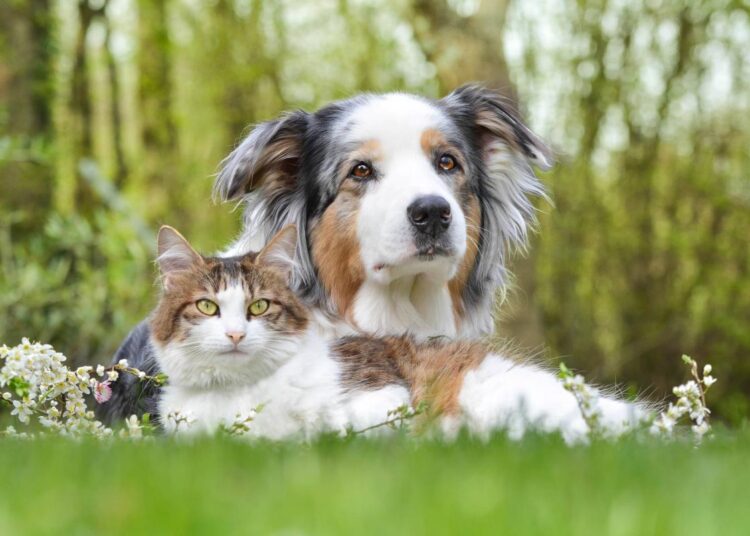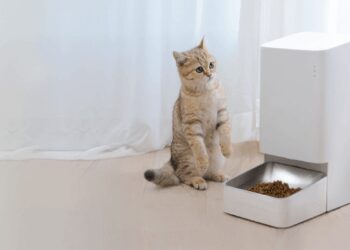As our beloved animal companions age, their needs evolve significantly. Just like humans, senior pets require specialized care to maintain their quality of life, manage age-related conditions, and ensure their comfort in their golden years. The concept of senior pet care has moved far beyond simply accepting the inevitable decline; it’s now a proactive, multifaceted approach embracing innovative solutions to extend healthy, happy lives. This shift is driven by deeper human-animal bonds and advancements in veterinary medicine that allow pets to live longer than ever before.From cutting-edge medical treatments and nutritional advancements to revolutionary mobility aids and enriched environments, the landscape of senior pet care is teeming with innovations. This comprehensive guide will explore the critical aspects of caring for aging pets, highlight the latest breakthroughs, and provide actionable advice for owners dedicated to providing the best possible care during this precious life stage.
Understanding the Aging Pet

The definition of “senior” varies by species and breed. Generally, larger dog breeds tend to age faster, reaching senior status around 5-7 years, while smaller dogs and cats may be considered senior around 7-10 years. Regardless of the specific age, the aging process brings about predictable physiological changes:
A. Decreased Organ Function: Kidneys, liver, and heart may become less efficient.
B. Weakened Immune System: Making them more susceptible to infections.
C. Reduced Mobility: Due to arthritis, joint degeneration, and muscle loss.
D. Cognitive Decline: Similar to dementia in humans, affecting memory, learning, and awareness.
E. Sensory Impairment: Vision and hearing loss are common.
F. Dental Issues: Increased risk of periodontal disease.
G. Changes in Metabolism: Leading to weight gain or loss, and altered nutritional needs.
Recognizing these changes is the first step towards proactive senior pet care. The goal isn’t to reverse aging but to mitigate its effects, manage discomfort, and support continued vitality.
Pillars of Innovative Senior Pet Care
Modern senior pet care is built upon several interconnected pillars, combining traditional veterinary wisdom with new technologies and holistic approaches.
A. Advanced Veterinary Diagnostics and Preventative Medicine
Early detection is paramount in managing age-related diseases. Innovations in diagnostics allow veterinarians to identify issues sooner, often before symptoms become apparent.
- Routine Senior Wellness Exams: More frequent check-ups (often twice a year) are crucial for aging pets. These typically include:
- Comprehensive Physical Exam: Thorough palpation, auscultation, and overall assessment.
- Blood Work: Detailed panels to check organ function (kidney, liver, thyroid), blood cell counts, and glucose levels.
- Urinalysis: To detect kidney disease, urinary tract infections, and diabetes.
- Blood Pressure Monitoring: Especially important for cats, who are prone to hypertension.
- Glaucoma Screening: Checking eye pressure to detect glaucoma early.
- Advanced Imaging:
- Digital X-rays: For assessing bone and joint health (e.g., arthritis progression).
- Ultrasound: Non-invasive imaging for internal organs to detect tumors or other abnormalities.
- MRI/CT Scans: For more detailed images of the brain, spinal cord, and complex internal structures, often used for neurological issues or cancer staging.
- Cancer Screening and Management: Increased awareness and tools for early cancer detection (e.g., specific blood tests, fine needle aspirates) and advanced treatment options like targeted chemotherapy, radiation, and immunotherapy.
B. Specialized Senior Nutrition
Dietary needs change significantly as pets age. Innovations in pet food formulation cater specifically to these requirements.
- Formulas for Senior Pets: These diets are typically:
- Lower in Calories: To prevent obesity, which exacerbates joint problems.
- Moderate in Protein: High-quality, easily digestible protein to maintain muscle mass without overtaxing kidneys.
- Controlled Phosphorus and Sodium: To support kidney and heart health.
- Enriched with Omega-3 Fatty Acids (DHA/EPA): For anti-inflammatory benefits (joints), skin health, and cognitive support.
- Fortified with Antioxidants: Vitamins E & C, lutein, beta-carotene to combat cellular aging and support the immune system.
- Added Prebiotics/Probiotics: For digestive health and nutrient absorption.
- Joint Support Ingredients: Glucosamine, chondroitin, MSM, and green-lipped mussel are commonly added to senior diets or available as supplements to support cartilage health and reduce inflammation.
- Cognitive Support Nutrients: MCTs (medium-chain triglycerides), L-carnitine, and B vitamins can help maintain brain function and improve cognitive sharpness.
- Wet Food Options: Senior pets may prefer softer foods due to dental issues or reduced sense of smell. Wet foods also provide higher hydration.
- Personalized Nutrition: The future increasingly points to highly customized diets based on individual pet’s health conditions, activity levels, and genetic predispositions, often formulated by veterinary nutritionists.
C. Pain Management and Mobility Aids
Managing chronic pain, particularly from arthritis, is central to senior pet comfort. Innovations offer significant relief.
- Pharmaceutical Pain Management:
- NSAIDs (Non-Steroidal Anti-Inflammatory Drugs): Highly effective for reducing pain and inflammation, specifically formulated for pets. Regular monitoring is essential.
- Gabapentin, Amantadine: Adjuvant pain medications for neuropathic pain or chronic pain.
- Injectable Therapies: New medications like Librela (for dogs) and Solensia (for cats) are monoclonal antibodies that target nerve growth factor (NGF), a key mediator of pain, offering monthly injections for long-lasting relief.
- Complementary and Alternative Therapies:
- Acupuncture: Helps alleviate pain, reduce inflammation, and improve circulation.
- Chiropractic Care: Focuses on musculoskeletal alignment to improve nerve function and mobility.
- Laser Therapy (Cold Laser): Reduces pain and inflammation, promotes healing at a cellular level.
- Therapeutic Massage: Improves circulation, reduces muscle tension, and enhances flexibility.
- Hydrotherapy: Underwater treadmills or swimming pools provide low-impact exercise, strengthening muscles without stressing joints.
- Mobility Aids:
- Orthopedic Beds: Provide pressure relief and support for aching joints.
- Ramps and Steps: Help pets access furniture or vehicles without jumping, reducing strain.
- Support Harnesses/Slings: Assist owners in helping pets with mobility challenges walk or get up.
- Wheelchairs/Mobility Carts: Allow pets with severe hind limb weakness or paralysis to remain active and enjoy life. Custom-fitted options are available.
- Non-Slip Floor Coverings: Rugs or mats prevent slips on hard floors, which can be dangerous for pets with unsteady gaits.
- Paw Grips/Boots: Provide extra traction on slippery surfaces.
D. Cognitive Support and Environmental Enrichment
Addressing mental decline is as important as physical care.
- Cognitive Support Diets/Supplements: As mentioned above, specific nutrients can help.
- Mental Stimulation:
- Puzzle Toys: Keep the mind active and engaged.
- Scent Games: Engage their powerful sense of smell, even if vision is diminished.
- Gentle Training/Review of Cues: Reinforcing familiar commands helps maintain cognitive function.
- Consistent Routine: A predictable schedule reduces anxiety and confusion for pets with cognitive dysfunction.
- Safe and Familiar Environment: Avoid moving furniture or making drastic changes that could disorient a confused pet.
- Night Lights: For pets with vision loss, night lights can help them navigate in the dark.
E. Dental Health Advancements
Good oral hygiene is crucial for senior pets, preventing pain and systemic illness.
- Professional Dental Cleanings: Under anesthesia, with pre-anesthetic blood work and monitoring, to remove plaque and tartar, and address diseased teeth. Advances in anesthesia protocols make this safer for senior pets.
- At-Home Dental Care: Regular brushing with pet-specific toothpaste, dental chews, and water additives.
- Veterinary Dentists: Specialists who can perform advanced procedures like root canals or extractions with specialized equipment.
F. Environmental Modifications for Senior Pet Safety and Comfort
Adapting the home environment can significantly improve a senior pet’s quality of life.
- Easy Access: Ramps for beds, couches, or cars; steps to outdoor areas.
- Comfortable Bedding: Orthopedic beds that support joints and alleviate pressure points.
- Non-Slip Surfaces: Runners or area rugs on slippery floors to prevent falls and build confidence.
- Temperature Control: Ensure a comfortable ambient temperature, as senior pets can be more sensitive to heat and cold.
- Easy Access to Food/Water/Potty: Place bowls and litter boxes in easily accessible locations, perhaps on each floor of a multi-story home.
- Safe Outdoor Access: Securely fenced yards, easy-to-navigate paths.
G. Palliative Care and Hospice Services
For pets nearing the end of their lives, palliative and hospice care focus on comfort and dignity.
- Pain and Symptom Management: Aggressive control of pain, nausea, appetite loss, and other symptoms.
- Quality of Life Assessments: Regular evaluations to ensure the pet’s comfort and happiness.
- In-Home Euthanasia: Allows pets to pass peacefully in their familiar environment, surrounded by loved ones.
- Grief Support: Resources for owners coping with the loss of a beloved pet.
The Benefits of Innovative Senior Pet Care

Investing in advanced senior pet care offers profound advantages for both pets and their human families.
A. Extended Healthy Lifespan
By managing age-related diseases and providing optimal support, pets can live longer, healthier lives.
B. Improved Quality of Life
Pain management, mobility aids, and cognitive support ensure that senior pets remain comfortable, engaged, and enjoy their daily activities.
C. Stronger Human-Animal Bond
Providing compassionate care during their vulnerable senior years deepens the connection and reinforces the special relationship.
D. Early Detection and Better Outcomes
Proactive diagnostics lead to timely intervention, often preventing conditions from becoming debilitating or life-threatening.
E. Reduced Stress for Owners
Knowing you’re providing the best possible care can alleviate anxiety and guilt associated with a pet’s aging process.
F. Preserving Mobility and Independence
Innovations in mobility aids allow pets to remain active and enjoy aspects of their previous lives, even with physical limitations.
Practical Hacks for Senior Pet Owners
Beyond the innovations, simple daily hacks can make a big difference.
A. Elevate Food and Water Bowls: Reduces strain on neck and joints for pets with arthritis.
B. Add Warmth: Senior pets can get cold easily; provide extra blankets or a heated pet bed.
C. Gentle Brushing: Daily, gentle brushing can be soothing and helps maintain coat health without discomfort.
D. Short, Frequent Walks: Instead of one long walk, multiple shorter walks are easier on joints and bladder.
E. Mental Stimulation with Familiarity: Use familiar toys or simple scent games rather than introducing complex new challenges.
F. Consistent Observation: Be vigilant about changes in appetite, thirst, elimination, behavior, or mobility.
G. Schedule Regular Vet Visits: Stick to the recommended twice-yearly check-ups.
H. Hydration Focus: Ensure constant access to fresh water; consider adding water to dry food or offering wet food for extra hydration.
The Future of Senior Pet Care
The field of senior pet care is poised for even greater breakthroughs, driven by ongoing research and technological integration.
A. Regenerative Medicine
Stem cell therapy and platelet-rich plasma (PRP) are already being used for joint issues, but their application will expand to other degenerative diseases.
B. Genetic Therapies
Targeting the genetic predispositions to age-related diseases, potentially offering preventative treatments or even “anti-aging” interventions at a molecular level.
C. Advanced Robotics and AI in Diagnostics
Smarter diagnostic tools that can analyze vast amounts of data to predict disease onset or monitor subtle changes in health, even remotely. Robotic assistance for mobility or monitoring.
D. Wearable Health Monitors
More sophisticated smart collars and vests that can continuously track vital signs, activity, sleep patterns, and even specific disease biomarkers, alerting owners and vets to potential issues in real-time.
E. Telerehabilitation and Virtual Vet Consults
Increased availability of remote consultations for physical therapy, pain management discussions, and general wellness advice, making specialized care more accessible.
F. Specialized Pet Retirement Communities
Dedicated facilities designed for senior pets, offering round-the-clock care, specialized enrichment, and comfortable environments for aging animals whose owners may no longer be able to provide the intensive care needed at home.
G. Pharmaceutical Innovations
Development of new medications with fewer side effects, targeted therapies for specific age-related conditions, and potentially drugs that slow the aging process itself.
Conclusion
The innovations in senior pet care are nothing short of remarkable, transforming what it means for our cherished companions to age gracefully. By embracing proactive veterinary care, specialized nutrition, advanced pain management, and thoughtful environmental modifications, we can significantly enhance their comfort, vitality, and overall quality of life during their later years.
This commitment to their well-being in their golden age is a testament to the profound bond we share. As research continues and technology advances, the future promises even more exciting possibilities, ensuring that our senior pets can continue to thrive, bringing joy and companionship for as long as possible. Providing compassionate and innovative care for our aging animals is not just a responsibility; it’s a privilege, allowing us to honor the unconditional love they’ve given us throughout their lives.












